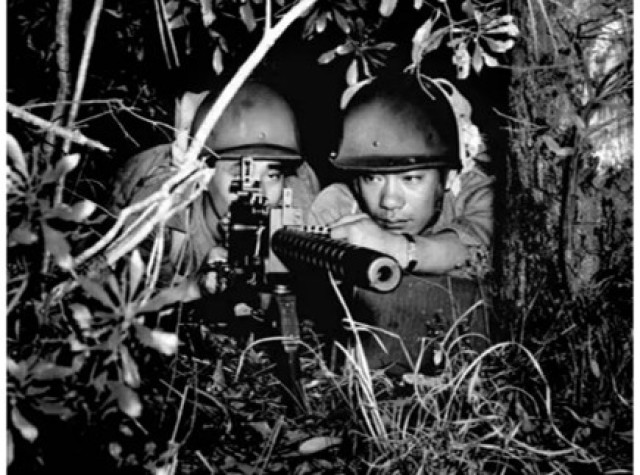This article, originally shared on the Army.Mil website, was unpublished but then republished. In the event of another unpublishing, it is being shared here for posterity. Article can be found: here
The 442nd Regimental Combat Team was the most decorated unit for its size and length of service during the entire history of the U.S. military. The 4,000 men, who initially came in April 1943, had to be replaced nearly 3.5 times. In total, about 14,000 men served, ultimately earning 9,486 Purple Hearts, 21 Medals of Honor and an unprecedented eight Presidential Unit Citations.
The motto of the 442nd Regimental Combat Team was "go for broke." It is a gambling term that means risking everything on one great effort to win big. The Soldiers of the 442nd needed to win big. They were Nisei — American-born sons of Japanese immigrants. They fought two wars: the Germans in Europe and the prejudice in America.
The motto was invented by the high-rolling Nisei Soldiers, who came from the Hawaiian islands. The Hawaii-born Nisei made up about two-thirds of the regiment. The remaining third were Nisei from the mainland. In April 1943, the islanders and mainlanders arrived for training at Camp Shelby, Mississippi. Immediately, they fought with each other because of different perspectives based on where they grew up.
The Army discharged all the Japanese Americans in the ROTC and changed their draft status to 4C, "enemy alien," January 19, 1942. The Nisei cadets felt such despair that the very bottom of their existence fell out. But community leaders convinced the demoralized students to turn the other cheek. One hundred and seventy students petitioned the military governor saying, "Hawaii is our home; the United States our country. We know but one loyalty and that is to the stars and stripes. We wish to do our part as loyal Americans in every way possible, and we hereby offer ourselves for whatever service you may see fit to use us."
The 442d Regimental Combat Team (RCT) was activated on February 1, 1943, composed of American-born Japanese called "Nisei" (NEE-say), or second generation. Some volunteered from Hawaii, others from the ten relocation centers on the mainland. The commander and most company-grade officers were Caucasian; the rest of its officers and enlisted men were Nisei. The team included the 442d Infantry Regiment with three battalions, the 522d Field Artillery Battalion and the 232d Engineer Company. After a year of individual and unit training at Camp Shelby, Missippi, the unit deployed to the Mediterranean in May 1944. The 1st Battalion remained at Camp Shelby to train replacements and was redesignated the 171st Infantry Battalion (Separate).
The 442d RCT joined the 100th Infantry Battalion in Italy and entered combat on 26 June 1944, attached to the 34th Infantry Division. Over the next two months the newcomers fought as well as their predecessors, earning nine Distinguished Service Crosses (while the 100th earned three more). On August 10, 1944, the 100th Battalion formally became part of the 442d RCT as its first battalion.
In September the 442d RCT was reassigned to Seventh Army for the invasion of Southern France. It was attached to the 36th Infantry Division for the drive into the Vosges Mountains. In four weeks of heavy combat in October-November 1944, the 442d RCT liberated Bruyeres and Biffontaine and rescued a "lost battalion" that had become cut off from the 36th Division. For this the 100th, 2d, and 3d Battalions, 442d Infantry and the 232d Engineer Company were each awarded the Distinguished Unit Citation [later redesignated as the Presidential Unit Citation (PUC)] .
After duty in the Maritime Alps guarding the French-Italian border, the 442d RCT was reassigned in March 1945 to Fifth Army for the Po Valley campaign. Attached to the 92d Infantry Division, an African-American unit, the 442d RCT helped drive the Germans from Northern Italy. One of its soldiers, Pfc. Sadao S. Munemori, was awarded the Medal of Honor posthumously.
The 442d RCT was demobilized and inactivated in August 1946. The lineage and honors have been preserved by the 100th Battalion, 442d Infantry (US Army Reserve).


